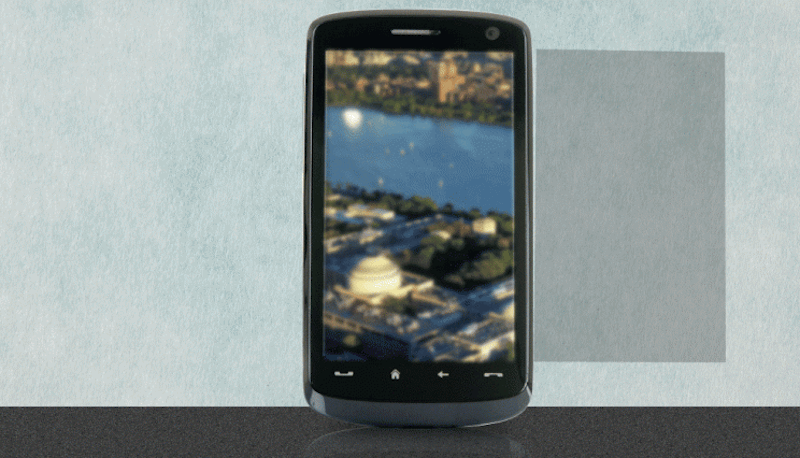Goodbye, Glasses: Future Smartphone Screens Could Correct Vision

Say goodbye to glasses. A new high-tech smartphone accessory can bring images on your device's screen into focus without a trip to the eye doctor.
This "vision-correcting display" is a thin, transparent material that fits on top of the screen of a smartphone or other device. It works in conjunction with a software program to correct the viewer's focal distance — the range at which the eye can bring objects into focus.
People with visual impairments, such as nearsightedness and farsightedness, have trouble with focal distance, said Gordon Wetzstein, a research scientist at the Massachusetts Institute of Technology's Media Lab who helped develop the new display technology. [10 Technologies That Will Transform Your Life]
Individuals with these types of impairments find it difficult to focus their eyes on physical objects that are outside their focal ranges, which means images or text on their device's screens can appear blurry to them.
To fix this problem, Wetztein and his colleagues created a display that acts similarly to a lens that fits over the smartphone screen, effectively adjusting images to fit within the viewer's focal range.
The new "eye pod"
The researchers created a prototype display that fits over the screen of an iPod Touch. The screen cover features a pattern of tiny pinholes that alters the light emanating from the iPod's screen, Wetzstein explained.
Get the world’s most fascinating discoveries delivered straight to your inbox.
The technology is similar to what is used to create glasses-free 3D effects, and is based on principles that are nearly 100 years old, Wetzstein said. However, the researchers came up with a new algorithm for their display.
"The algorithm basically computes a pattern that's being displayed on the regular screen, but when you observe it through this pinhole mask, it forms this illusion of a focused image outside the physical device," Wetzstein told Live Science.
More specifically, the algorithm works by adjusting the intensity of each direction of light that emanates from a single pixel of an image on the device's screen. The precise adjustment made depends on information about the viewer's specific vision defect, data that the researchers plug into the algorithm.
Future versions of the prototype display will allow the viewer to adjust the algorithm based on prescriptions from an optometrist, Wetzstein said.
Goodbye Glasses
The vision-correcting display won't help visually impaired people see the rest of the world more clearly, Wetzstein explained, but it could improve their visual experience with smartphones, e-readers, GPS units and other devices.
Wetzstein and his colleagues envision the display being used in cars, so that farsighted drivers can read their odometers and GPS devices without having to put on reading glasses.
"The significance of this project is that, instead of relying on optics to correct your vision, we use computation. This is a very different class of correction, and it is nonintrusive," study lead author Fu-Chung Huang, a researcher at the University of California, Berkeley, said in a statement.
The researchers have already tested the device and found that it can correct myopia (nearsightedness), hyperopia (farsightedness), astigmatism and even something Wetzstein calls "higher-order aberrations," which include vision defects that make it difficult to see at night and those that cause double vision. Such defects are difficult to correct with conventional glasses, Wetzstein said.
Follow Elizabeth Palermo @techEpalermo. Follow Live Science @livescience, Facebook & Google+. Original article on Live Science.
